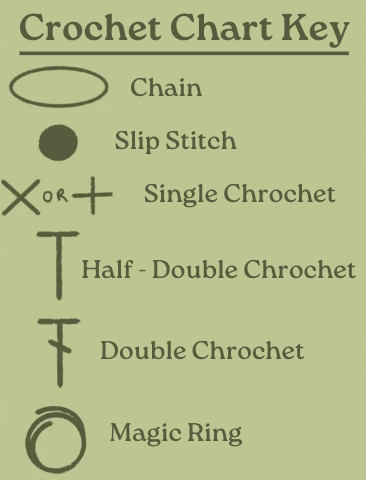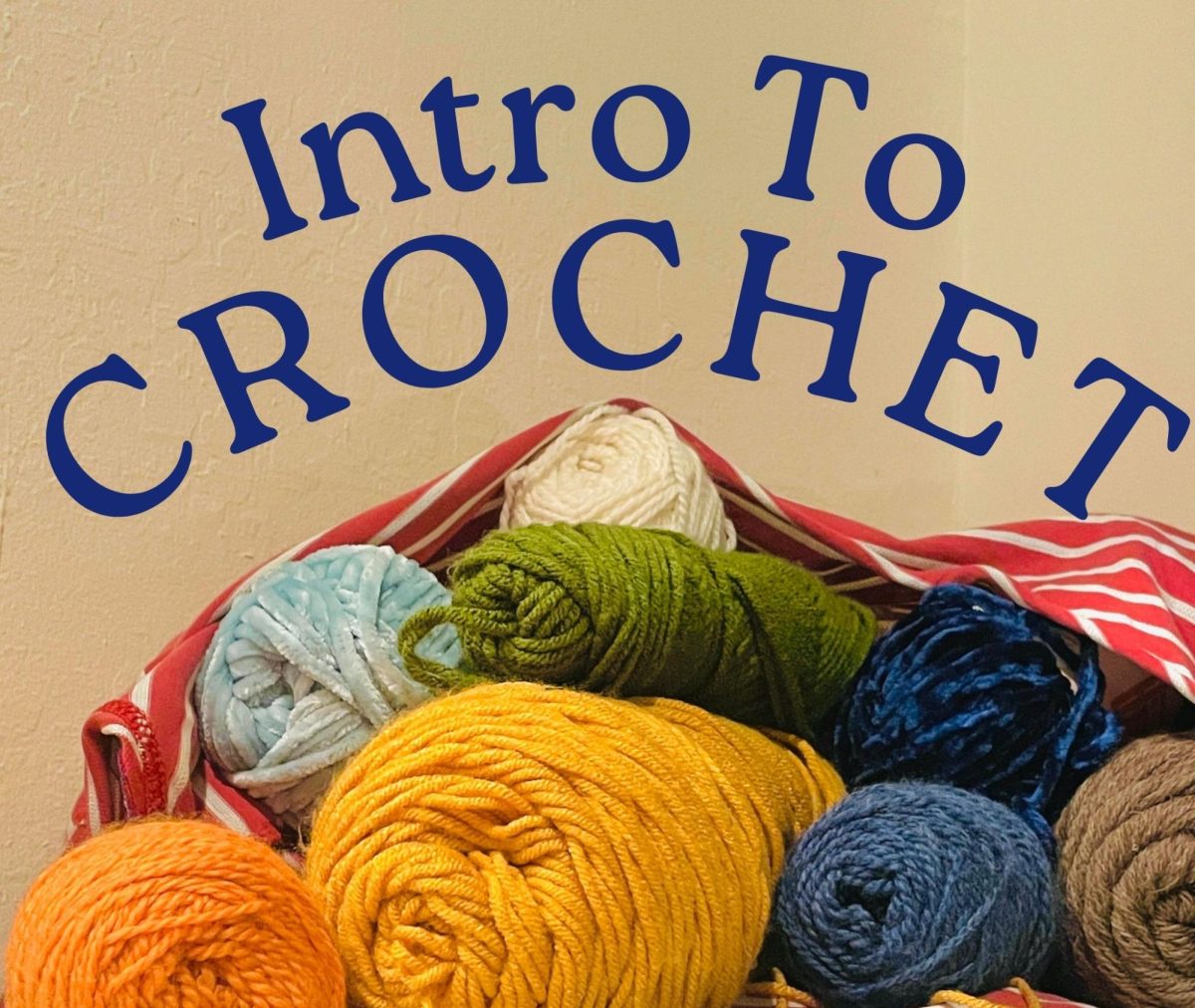From hats to sweaters and decorations there is an endless amount of things to be made if you know how to crochet. Besides having the practical use of getting to make anything you want, it’s also fun and something you can teach yourself from home. There are just a few things you need to know, like what materials are needed, basic stitches, and how to read patterns.
Yarn:
Yarn is of course the most important thing to have when crocheting, but simple or not there are some things to consider when starting a project.
Yarn can be “put up” in different ways, this refers to how it is wound when you buy it. Skeins and balls of yarn are the most common due to them being the typical way yarn is sold in craft stores. Hanks and cakes are another two ways yarn may be bought but it is less likely, What is a Skein of Yarn? by Nimble Needles explains the details.
Yarn can come in many different lengths and sizes so you need to make sure that you will have enough to complete your project. Yarn length is generally referred to both in yards/meters and grams/ounces. How much yarn you have can be determined by looking at the tag or label of the yarn. The thickness or weight of the yarn is another important factor, the industry standard for yarn weight is on a scale of 0 – 7 (0 being lace and 7 being jumbo). The weight of the yarn is significant because it will affect how much you will need for your project, generally the higher the weight of the yarn the less its length will need to be to complete something. Most patterns (if you are following one) will give you an estimation of how much yarn you will need but that may not always be the case, How Much Yarn Do I Need for a Crochet Project? by Sarah Stearns does a good job of explaining some more technical math you can do to figure out the yarn amount if not stated.
Crochet hooks:
Crochet hooks are pretty straightforward, they are what you will use to crochet your yarn. The one tecnicalty is the size hook you are using. As mentioned above yarn will come in different thicknesses and depending on that your hook size will vary. Figuring out which hook size you need is very simple. The yarn label will generally indicate the recommended hook size. But if it isn’t stated a good indicator for what hook to use is if the yarn fits well into the hook’s crevice. What size hook you use is not at all set in stone, you will be able to crochet no matter what hook size you use but it may affect how tightly together your stitches are.
Stitches:
Now onto the skill portion of crocheting. It would be a little hard to describe how you do the beginner stitches in words so I am not going to; however, I highly recommend that for a tutorial you go to YouTube and watch videos to help you learn. That being said, there are still several good things to know about beginner stitches. For some background, stitches have abbreviations so that writing or reading a pattern is brief and simple.
Slip Knot is for the most part how you start your base chain to get your project going. The abbreviation for Slip Knot is SL ST.
Magic Ring alternatively is another basic way to start your project out. It allows your project to be worked into a circle which is how it’s different from the Slip Knot. The abbreviation for Magic Ring is MR.
Chain is the first thing that all beginners need to know, a Chain is the backbone of every crochet project. It is used to create a single line of stitches that can be used as a base for other stitches to work off of. Often in articles or videos, you will hear for example “chain one” or “chain 10” and this refers to how many Chains you have to count out before the next step. The abbreviation for Chain is CH.
Single Crochet is a stitch that gets crocheted into already-existing chains and increases by one. This means that when you are rotating your work and are using a Single Crochet you would chain one. The abbreviation for Single Crochet is SC.
Half Double Crochet is another stitch that gets crocheted into already-existing chains but this time it increases by two. So similar to Single Crochet when you rotate your work you will chain two. The abbreviation for Half Double Crochet is HDC.
Double Crochet like Half Double and Single Crochets work into already-existing chains and increase by three. So when you rotate your work you will chain three. The abbreviation for Double Crochet is DC.
Slip Stitch is a very important stitch that is used in several ways when crocheting. It is unique to other stitches because you don’t chain at all, you only stitch back into already existing loops in your project. The abbreviation for Slip Stitch is SL ST.
Working Yarn is not a stitch, it refers to the yarn attached to your Skeins that you are pulling from to make the stitches.
Yarn Over is also not a stitch but it may be mentioned in the pattern and whatnot so it is good to know. It refers to when you bring your working yarn over the top of your hook in addition to how many loops are already there. The abbreviation for Yarn Over is YO.
How to read crochet charts:
Knowing your stitches and their abbreviations you may also need to know how to read crochet charts. Crochet charts are a visual representation of a crochet pattern and are a very useful way to get the gist of a pattern fast. On crochet charts instead of abbreviations there are symbols, see the image below for the symbols of all the beginner stitches.

Advice:
Now that you know how to get started on your crocheting here is some advice on some of the minor details as you are getting started.
- Yarn can be expensive especially for higher quality stuff, craft stores like Michals and Joans while not always having the most top-notch materials do have mostly cheap and accessible yarn. Especially for beginners don’t get hung up on quality, no matter what the yarn will serve its purpose.
- If something feels too hard or is not coming out the way you expect, keep on trying. It might seem difficult at first but it becomes easier the more you work at it. Sometimes it is frustrating but push past that because it will come to you eventually.
- Looking on the internet for ‘beginner patterns’ is always a good place to start, but would not let that confine you. Working on harder or more ambitious projects at a beginner level is not an impossible task. It will only take you more time to understand and figure out, that is all and it is most times worth it to push yourself.
- Don’t be afraid to tweak and change a pattern, or come up with something on your own. Crochet projects are completely customizable and it is fully in your control to add, subtract, or change something about your work.
- If you are not happy with something or you mess us a stitch don’t be scared to pull it out and retry it. There are hardly ever permanent mistakes when crocheting so take time to get it right the first time.
- Yarn and hooks are the only essential things besides a good pair of scissors. There are additional things that are advertised but are truly not necessary, especially if you are just beginning, do not be influenced to buy them because it will “make it easier” if you do not need them whatsoever.
Overall there is so much more to crochet so I urge you to do your research too. There are lots of blogs, YouTube videos and so much more dedicated to teaching crochet. If you have any questions there is plenty of help just a search away. Remember that crochet is supposed to be fun so stay open to advice and be creative with it!


